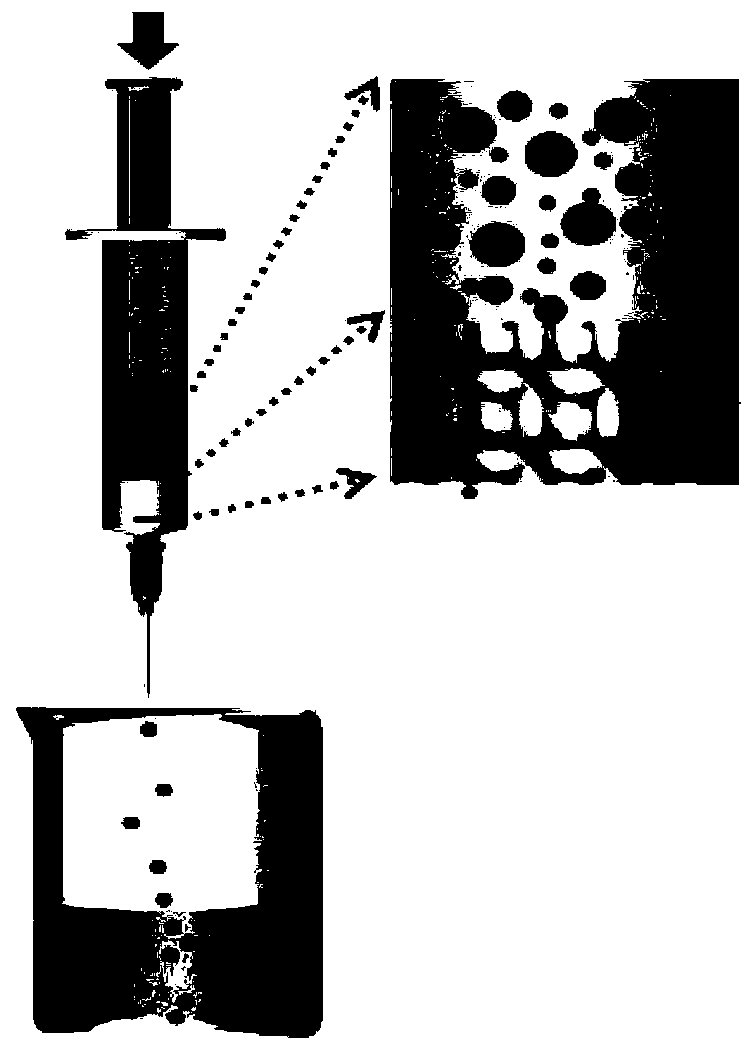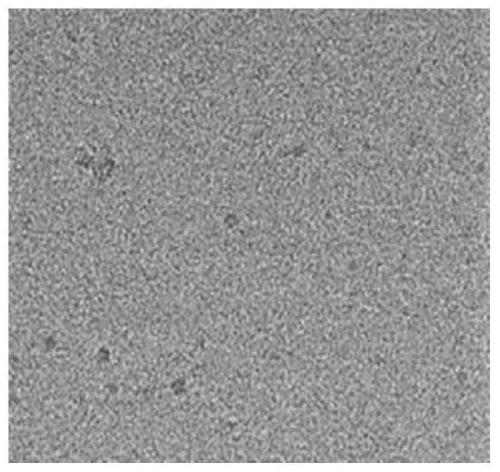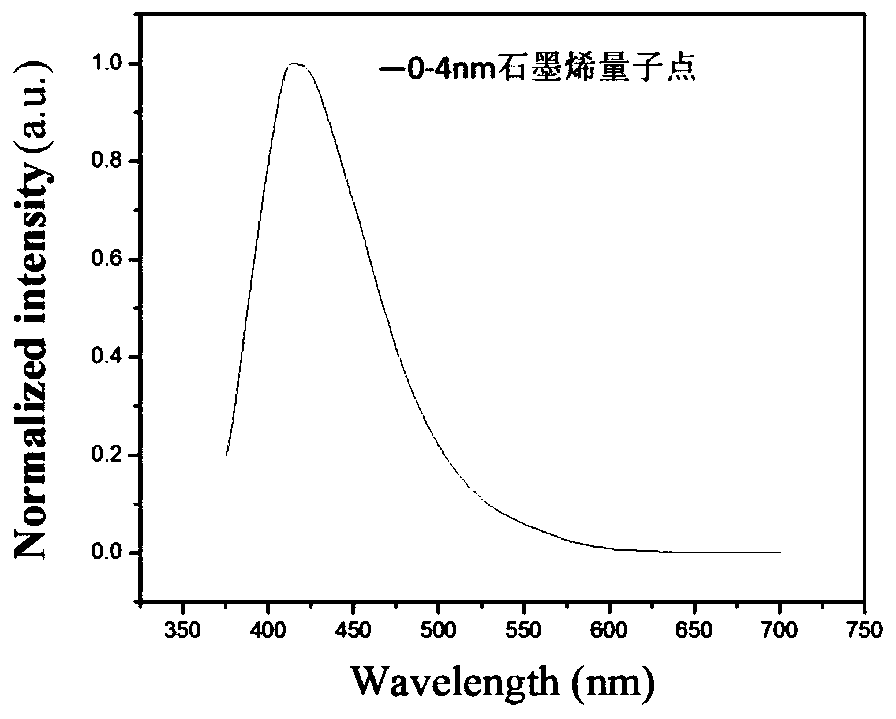Method for separating graphene quantum dots by using molecular sieve
A technology of graphene quantum dots and molecular sieves, applied in graphene, chemical instruments and methods, nano-carbon, etc., can solve the problems of organic extractant harm, difficulty in selecting organic extractant, etc., and achieve the effect of uniform distribution and high purity
- Summary
- Abstract
- Description
- Claims
- Application Information
AI Technical Summary
Problems solved by technology
Method used
Image
Examples
Embodiment 1
[0039] Step 1: Weigh 50 mg of MCM-41 molecular sieve with an average pore diameter of 4 nm, and put it into a syringe for compaction.
[0040] Step 2, take 3ml of centrifuged initial graphene quantum dots and put them into the syringe in step 1.
[0041] Step 3, squeeze the syringe, press the solution out of the syringe, and obtain graphene quantum dots with a size of 0-4nm.
[0042] Step 4, add 2-3ml of absolute ethanol to the syringe to separate from the remaining molecular sieve, and squeeze the liquid in the syringe out of the syringe. Repeat the above operation 3-5 times.
[0043] Compared with the fluorescence emission spectrum of the initial graphene quantum dot solution (attached Figure 4 ), the obtained quantum dot size is 410nm for the graphene quantum dot solution whose emission wavelength is 0-4nm, and the wavelength in the original solution is that the emission peak at the 510nm place disappears (see appendix image 3 ). It was shown that graphene quantum dot...
Embodiment 2
[0045] Step 1: Weigh 100 mg of SBA-15 molecular sieve with an average pore diameter of 8 nm, and put it into a syringe for compaction.
[0046] Step 2, take 3ml of centrifuged initial graphene quantum dots and put them into the syringe in step 1.
[0047] Step 3, squeeze the syringe, press the solution out of the syringe, and obtain graphene quantum dots with a size of 0-8nm.
[0048] Step 4, add 2-3ml of absolute ethanol to the syringe to separate from the remaining molecular sieve, and squeeze the liquid in the syringe out of the syringe. Repeat the above operation 3-5 times.
[0049] Step 5: Take out the remaining mixture of molecular sieve and graphene quantum dots in the syringe, and elute the large-sized quantum dots adsorbed on the molecular sieve by means of centrifugation, ultrasound, and heating to obtain a solution of graphene quantum dots with a size greater than 8nm.
[0050]Step 5, taking out the remaining mixture of molecular sieve and graphene quantum dots in...
PUM
| Property | Measurement | Unit |
|---|---|---|
| pore size | aaaaa | aaaaa |
| particle diameter | aaaaa | aaaaa |
| size | aaaaa | aaaaa |
Abstract
Description
Claims
Application Information
 Login to View More
Login to View More - R&D
- Intellectual Property
- Life Sciences
- Materials
- Tech Scout
- Unparalleled Data Quality
- Higher Quality Content
- 60% Fewer Hallucinations
Browse by: Latest US Patents, China's latest patents, Technical Efficacy Thesaurus, Application Domain, Technology Topic, Popular Technical Reports.
© 2025 PatSnap. All rights reserved.Legal|Privacy policy|Modern Slavery Act Transparency Statement|Sitemap|About US| Contact US: help@patsnap.com



